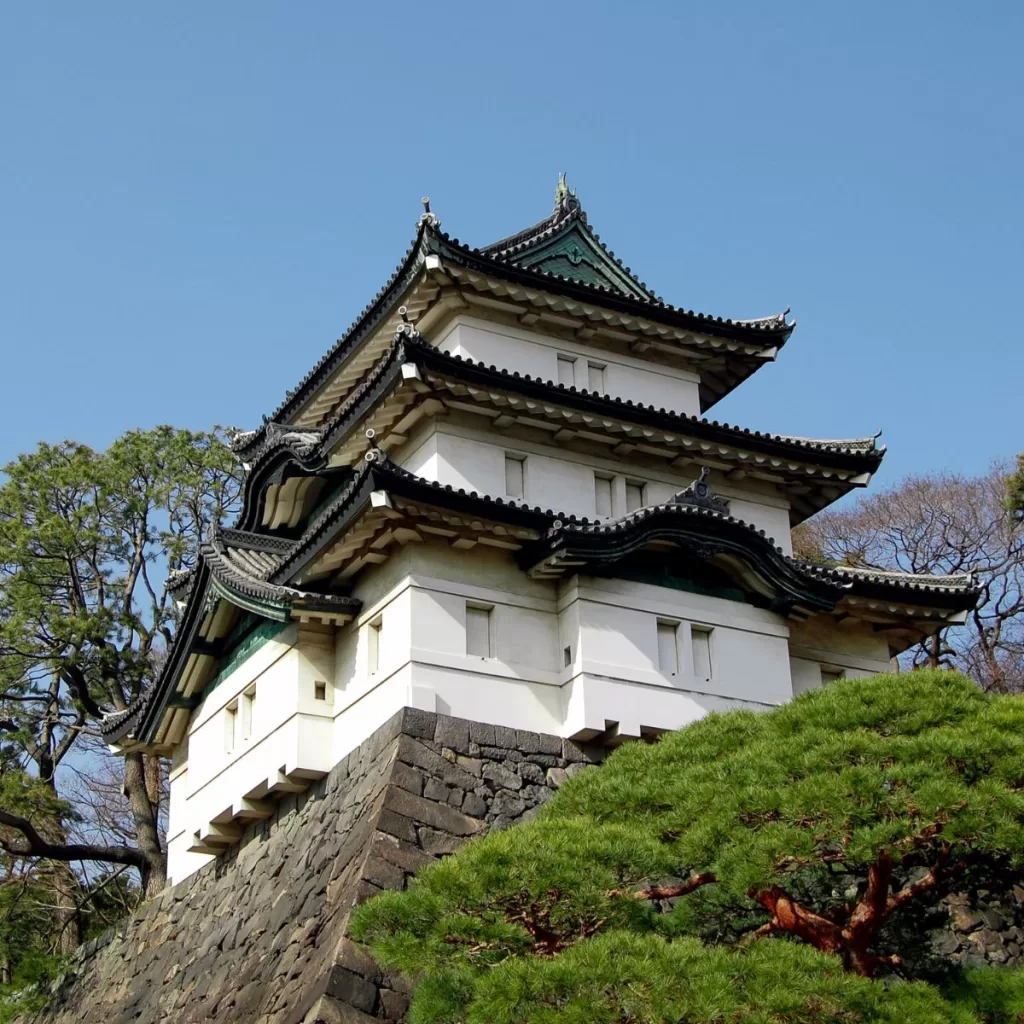Odawara Castle: A historical Fortress in Kanagawa Prefecture
Odawara Castle is a magnificent historical fortress located in the city of Odawara in Kanagawa Prefecture, south of Tokyo. With a history dating back to the 15th century, Odawara Castle has witnessed many monumental events and figures in Japanese history. Today, it remains one of the most well-preserved and popular castle sites in Japan.
Early History of Odawara Castle
Odawara was originally a stronghold of the Doi clan during the Kamakura period. In the 15th century, the Kobayakawa clan, a collateral branch of the Doi clan, built a fortified residence on the site of the present Odawara Castle. After the Uesugi Zenshū Revolt of 1416, Odawara was under the control of the Omori clan. In 1495, the castle was seized by Ise Moritoki, founder of the Odawara Hōjō clan, one of the most influential clans of the Sengoku period.
Over the next century, five generations of the Odawara Hōjō clan expanded and improved the fortifications of Odawara Castle. Surrounded by mountains and protected by moats and walls, the castle was situated in a highly defensible position overlooking Sagami Bay. By the late 16th century, Odawara Castle formed the stronghold from which the Hōjō clan ruled over the entirety of the Kantō region.
Attacks by Uesugi and Takeda
During Japan’s Sengoku period, Odawara Castle faced several major attacks. In 1561, the castle withstood an assault by the forces of Uesugi Kenshin. Eight years later, in 1569, Takeda Shingen also attempted to take Odawara but failed to penetrate its formidable defenses.
The Hōjō clan further strengthened the castle’s fortifications between 1569 and 1590 in anticipation of an attack by Toyotomi Hideyoshi, who was rapidly gaining power and territory. However, when Hideyoshi finally mobilized his massive army against Odawara in 1590, he opted for a long siege rather than a direct assault. After three months, with dwindling supplies, the Hōjō conceded defeat and surrendered the castle to Hideyoshi without bloodshed.
Tokugawa and Edo Periods
Following his victory at Odawara, Hideyoshi awarded the Kantō region to Tokugawa Ieyasu, who thereafter used Edo Castle as his base and gave control of Odawara Castle to his retainer Ōkubo Tadayo. Ōkubo reconstructed Odawara Castle on a smaller scale, with the castle occupying only the innermost bailey of the former Hōjō fortress.
Over the course of the Edo period, Odawara Castle remained under the control of various daimyō clans, including the Ōkubo, Inaba, and again the Ōkubo. Though damaged by major earthquakes in 1703, 1782, and 1853, the castle was repeatedly repaired and rebuilt.
During the Boshin War leading up to the Meiji Restoration in 1868, the Ōkubo clan opened Odawara Castle to the pro-imperial Satchō Alliance forces without resistance.
Meiji Era Destruction and Restoration
In 1870, the new Meiji government issued a decree abolishing all former feudal castles, viewing them as symbols of the old regime. Odawara Castle was dismantled from 1870-1872 in accordance with this policy. The stone base of the donjon became the foundation for a Shinto shrine in 1893.
In the 20th century, efforts gradually began to restore and recreate Odawara Castle. The castle site became Odawara Castle Park in 1950, with museums, amusement rides, and a zoo. The five-story donjon seen today was reconstructed in 1960 to celebrate Odawara becoming a city.
Since then, the three main gates of the castle have also been reconstructed: Tokiwagi Gate (1971), Akagane Gate (1997), and Umadashi Gate (2009). Repairs and renovations to the donjon were carried out from 2015-2016. Odawara Castle remains one of the most historically important and impressive castles in Japan.

Layout and Remaining Structures
Odawara Castle is laid out in three concentric enclosures, containing various gates, walls, and the donjon. Visitors today enter through the Kita No Mon gate and cross the Sannomaru, or outer bailey, to reach the Ninomaru, or middle bailey, which houses the donjon and connected buildings. The innermost bailey, the Honmaru, contained the living quarters of the daimyō during the Edo period.
The reconstructed five-story donjon stands on the original stone base and exhibits the castle’s history inside. Visitors can climb to an observation deck on the top floor for panoramic views. The Tokiwagi, Akagane, and Umadashi gates provide access to the inner baileys from the Sannomaru. Sections of the stone walls, moats, and earthworks also remain intact around the castle grounds.
Visiting Odawara Castle
Odawara Castle is an easy side trip from Tokyo, located just one hour by train. It makes for an enjoyable visit year-round. Spring brings beautiful cherry blossoms around late March-April, while July offers hydrangea flowers. The sakura and plum blossoms in February-March are also highlights.
Inside the castle grounds, visitors can explore historical exhibits and climb the donjon for excellent views over the city. The adjacent Odawara Castle Ninja House lets guests try shuriken throwing and other ninja tricks. Odawara remains one of the most impressive historical castles in eastern Japan and the Kanto region.
Another amazing historic site to visit is the magnificent Nijo Castle, a UNESCO World Heritage site famous for its ornate buildings, sprawling grounds, and Nightingale floors that “sing” as you walk over them.